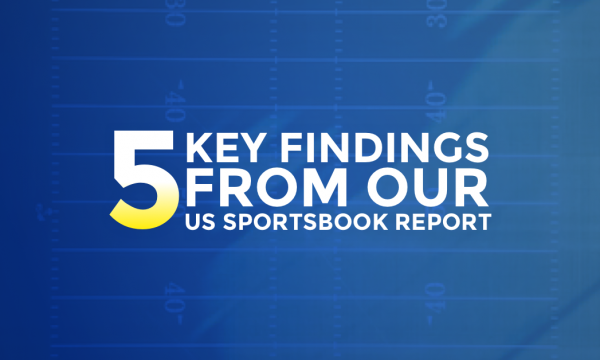
The widely anticipated Penguin 3.0 is now upon us, although confusion still reigns as to what extent.
Google originally confirmed that the update had rolled out on Friday evening, although Google appeared to back-track on this yesterday. Instead, Google’s Pierre Far claimed in a blog that Friday’s update affected “less than 1% of queries in US English search results” and that Penguin 3.0 was in fact a “slow worldwide rollout”, with the results like to become evident over the course of “the next few weeks”.
Now that the dust has largely settled on Penguin 3.0, it’s time to take a detailed look at exactly who has and hasn’t suffered. We have deliberately waited until the end of the ‘fall-out’ period of the update to look at what the picture looks like during any typical day in search. This information comes from our specialist dataset, which tracks tens of thousands of keywords on a daily basis and informs many of the decisions that we make in devising a search marketing strategy. For the purpose of this analysis, we have looked at the 1,500 keywords with the greatest search volume.
What is clear is that the degree of change in the search engine results pages remains fairly minimal. Aside from some clear ‘tidying up’ by Google when it comes to pirate movie streams, illegal torrents and similar sites, most major gains and losses appear to be attributed to natural fluctuations, rather than any notable algorithm change.
The winners and losers
To get a picture of the extent of any update, a good starting point is to look at the big winners and losers. The charts below document the ten biggest gainers and fallers across the top 1,500 keywords that we track, measured by the increase or decrease in estimated monthly traffic.
When we look at visibility change, big brands dominate the ‘winners’ column. QuickQuid is the biggest winner, with an estimated visibility increase if 38,935, whilst brands such as GoCompare, H Samuel and Thomas Cook can expect traffic lifts. On the other hand, the ‘losers’ column is headed by Wage Me, seemingly another pay day loan provider that has been caught out by Google’s anti-spam algorithm updates.
However, when we look at actual ranking movements, we see minimal changes to average rankings. This is particularly true in the ‘winners’ column, where the highest average ranking increase is just 15.8. Indeed, six of the biggest ‘winners’ (H Samuel, Tech Radar, GoCompare, Thomas Cook, Solar Movie and Travel Zoo) have gained visibility despite negative overall ranking growth whilst three of the biggest 15 losers have positive overall ranking growth.
Digging deeper
Looking closer at this data on a URL by URL basis, we start to see the reasons behind these visibility changes. In this example, we look at the biggest winner; QuickQuid.
The biggest increase in visibility is attributed to the term ‘payday loans’, a term with a search volume of 201,000, for which QuickQuid has risen from position four to position one. The second biggest increase in visibility comes from the term ‘payday loan’, for which the URL has risen four places. This isn’t typical of a brand enjoying the benefits of a Google algorithm update but is, in fact, typical of the natural fluctuation that one would expect to see in such a competitive search market. QuickQuid is not so much a ‘Penguin winner’ but is instead, simply enjoying a natural fluctuation in rankings, with increased positions for high volume terms and minor falls for lower volume terms (such as loan and short-term loans).
This trend is typical of all of the major winners in our analysis, which very minor gains for competitive keywords representing the biggest uplift in visibility. Certainly in this analysis, we’re not seeing the tell-tale signs of a sudden and unexpected algorithm uplift.
When looking at Money Supermarket, we also find that the visibility increase can be attributed to small gains in high volume search queries. In this case, the top five increases in visibility are the result of a one position ranking uplift.
So what about the losers?
The list of ‘fallers’ since Friday is certainly a more diverse collection of URLs, with big online brands like Boux Avenue, Specsavers, The Post Office and even the BBC sat alongside pay day lenders and pirate movie streaming. So can we see something more meaningful in this list?
Certainly as far as the pirate movie streaming is concerned, we do see the tell-tale signs of an anti-spam algorithm at work, with a prominent URL plummeting from top positions.
This doesn’t come as a huge surprise, given previous Penguin updates and Google’s tougher stance on piracy (although the presence of a couple of similar URLs in the winners column suggests that the update has failed to capture many of these sites). What we see here is typical of a Penguin update.
But for the bigger brands, it would seem that Penguin isn’t the reason why they’re sat in the less desirable column of our chart. Let’s take a look at the biggest loser, wageme.com as an example.
Whilst falls from position one to three, or five to nine are notable, they’re not typical of a URL falling foul of a targeted algorithm update. We see similar scenarios with MoneySavingExpert, although the positional falls are even smaller.
On the fifteen terms responsible for the greatest loss in visibility, nine experience a loss of just one ranking position. The biggest keyword, loans, drops just three positions.
Does the minimal impact raise questions over Penguin 4.0?
The impact of Penguin 3.0 has not been as far-reaching as many webmasters had perhaps feared and, for major commercial brands at least, the majority of changes appear to be attributable to natural fluctuation within SERPs. Of the brands that have either gained or lost notable visibility according to our data, there are no clear signs that those drops have been caused by a targeted algorithm change.
One could argue that the minimal impact of Penguin 3.0 is the result of many brands ‘cleaning up their act’ following experiences with previous Penguin updates and, whilst there is likely to a degree of truth to this, it is also worth noting that we have yet to see any examples of brands being ‘released’ from Penguin as was widely expected. Many URLs that were negatively impacted by previous Penguin updates have yet to return to previous levels.
But this raises questions over Penguin updates. This was an update that was a year in the making, was one of the most anticipated in recent years and was an update that Google themselves had trumpeted. For such an update to have very minimal impact should be a sign that we are at the very beginning of a long road for Penguin. It is suspicious that Penguin seems to have so few victims and it may not be until Penguin 3.1, or even Penguin 4.0, that we start to see the real impact of Google’s anti-link spam enhancements.
Download our Ebook to find out why Google's algorithm updates are changing your business model.
To find our more about our approach to SEO and about our dataset, please get in touch.








